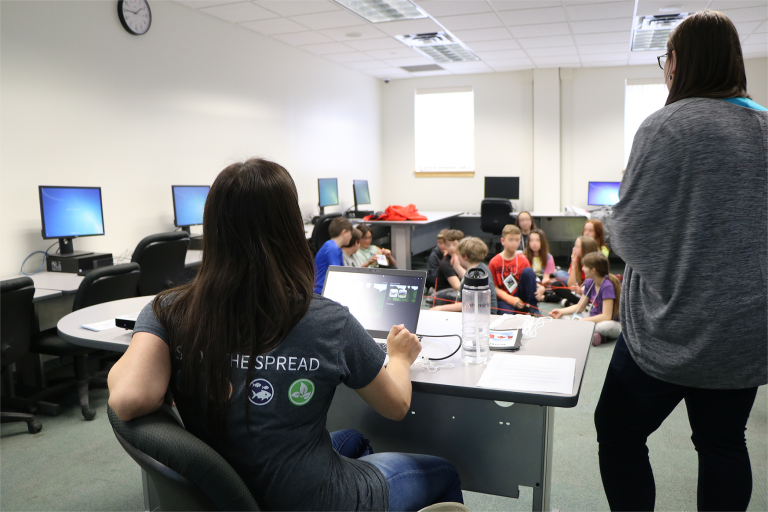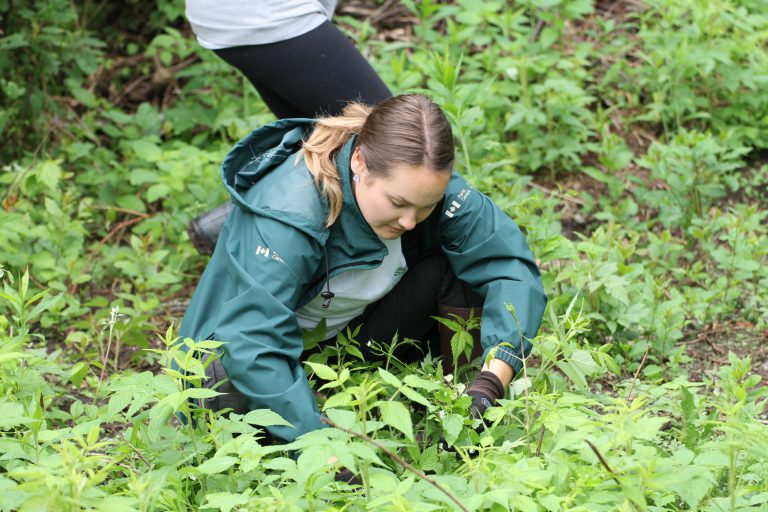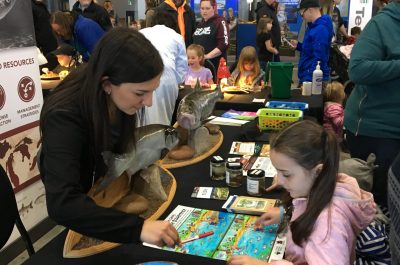Teaching and learning about invasive species increases community awareness about the threat of invasive species. Over time, this will lead to better environmental decisions and inspired actions to help stop the introduction and spread of invasive species.
Formal and informal teaching environments are critical avenues for exposing learners to the issues surrounding invasive species. To be effective, teachers and learners need an array of resources within various curriculum requirements and learning styles. Educators can be instrumental in providing minds, both young and old, with the knowledge and tools they need to make informed choices and environmentally sound decisions.
See our compiled database of free teaching resources from invasive species groups below!
Introduce your class to invasive species with this video!



If you are viewing this table on your mobile device, rotate your device into landscape mode for easier use
| Activity Level | Grade Level | Meets Specific Curricular Outcomes | Lesson Plan | In Class Activity | Out of Class Activity | Games | Online Activity | Assessment tools | Notes |
|---|---|---|---|---|---|---|---|---|---|
| Double Trouble | K to 12 | Yes | Yes | Yes | Yes | No | No | Yes | Students will research the interdependencies among plants and animals in an ecosystem and explore the role climate plays in their survival. They will compare ecosystems from different parts of the world by learning more about invasive species in their own back yard and also about their place of origin. They will use these comparisons to determine if a species could survive in a new ecosystem and form hypotheses on the effects climate change might have on their movement and survival. Finally they will share what they learned with their classmates and the community. |
| Double Whammy in the bag | 8 to 12 | Yes | Yes | Yes | Yes | Yes | No | Yes | Students will create a game about the double whammy of invasive species and climate change and how together they will affect biodiversity, the economy, the environment, and the inhabitants in your region. |
| Get the lingo! | K to 12 | Yes | Yes | Yes | No | Yes | No | Yes | In a variation of Bingo, students use climate change and AIS (aquatic invasive species) terms and definitions to fill up squares on a board to be the first to go LINGO! |
| Making Connections: Climate Change and AIS | K to 12 | Yes | Yes | Yes | No | No | No | No | This lesson plan suggests one way to help students interact with new material. They will list vocabulary words they already know about climate change and aquatic invasive species, and sort those words into related groups. Then as they learn new words, students will add them to the groups of words they already know. Estimated class time: one class period for the initial lesson, plus one optional class period at the end of the unit. |
| Visualizing changes in the Earth System: Climate Change and Invasive Species | K to 12 | Yes | Yes | Yes | No | No | No | Yes | At the conclusion of the lesson, students will be able to: Provide examples of potential impacts caused by climate change Discuss various interpretations of the role that climate change can play in the establishment and spread of invasive species in the Great Lakes Recognize some common native and invasive species in the Great Lakes. |
| What Makes a Good Invader? | K to 12 | Yes | Yes | Yes | No | No | No | No | Students will learn about invasive species in the Great Lakes ecosystem and explore the characteristics that make species good invaders, factors that can influence invasive communities, and the role climate change may play in causing and proliferating invasions. This lesson is most appropriate for the 4th -6 th grade, but could be used in higher grades. The activity can complement ecological concepts such as population, community, niche, and invasive species |
| Tackle Invasive Species 'Hands-on" with your Students! | K to 12 | Yes | Yes | Yes | Yes | Yes | No | No | 8 activities and games for a variety of age groups teaching them what invasive species are, how they effect their new environment, and how to identify them. |
| Biodiversity is best | 6 | Yes | Yes | Yes | No | No | Yes | Yes | An inquiry-based unit of 6 activities where students will learnthat conserving and protecting our water supply is necessary for biodiversity and biodiversity is necessary for the health of our planet. |
| Teaching About Invasive Species Book | K to 12 | No | Yes | Yes | Yes | Yes | No | Yes | Teaching About Invasive Species is designed as a tool kit. Whether working inside or outside schools, youth educators will find in Green Teacher’s new book the innovative perspectives, program ideas, games and activities that they need to engage young people from 6-19 years of age in this challenging topic |
| Invasive Species | 7 to 10 | Yes | Yes | Yes | Yes | No | Yes | Yes | Students are introduced to the topic of invasive species and presented with several Canadian examples. Using theme, students will explore the difference between open and closed ended questions. Students will research and write a report based on an open ended question about invasive species. |
| Great Lakes Most Unwanted | 4 to 8 | Yes | Yes | Yes | No | No | No | No | Students work in small groups to organize invasive species cards, featuring facts and photos. Each group presents a different invasive species in a poster or fact sheet to the class. |
| Assess the Mess | 7 to 12 | No | No | Yes | Yes | No | No | No | Students research the presence of native, non-native and invasive species in their area, survey a local nature site and discuss the effects on local wildlife and habitat. |
Do you want help slow the spread of invasive species and reduce their environmental and economic impacts? If so, join the citizen science program! The citizen science program is made up of volunteers who receive expert training to identify, track, and control important invaders in priority areas.
